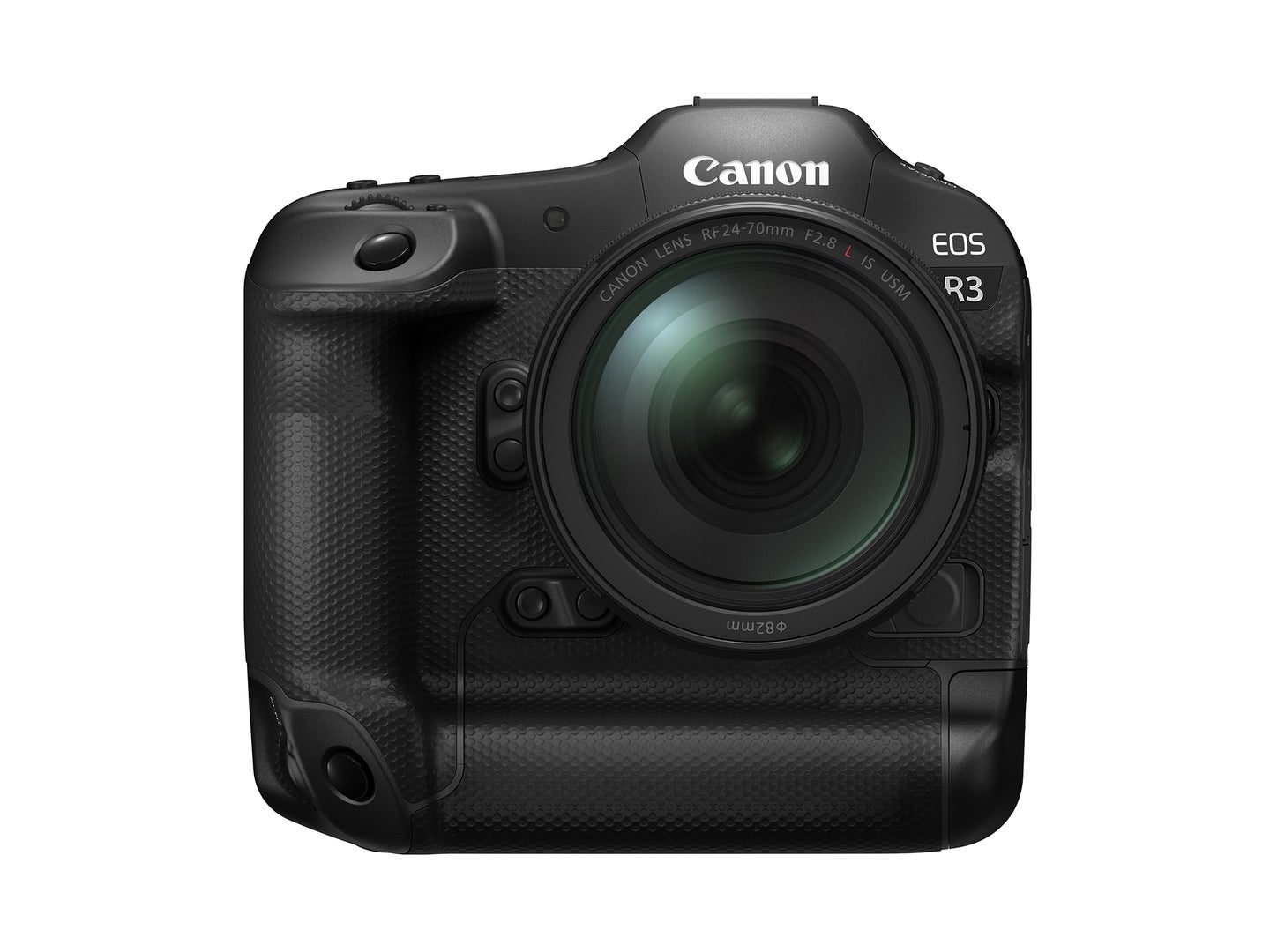Canon EOS R3 confirmed: A pro-level mirrorless camera with eye-controlled autofocus
it will sit between the R5 and the 1D X III in Canon's line.

We may earn revenue from the products available on this page and participate in affiliate programs. Learn more ›
Years in which the Olympics take place tend to be good for pro-level camera enthusiasts. So far, 2021 has not disappointed. Nikon announced the development of its flagship Z9 mirrorless camera. Sony unleashed its beastly A1. And now, Canon has gone public with its plans to release a camera that sits just below its flagship 1D X III. It’s called the Canon EOS R3, and while we don’t have a ton of hard information about it yet, it already sounds exciting.
A new sensor for the Canon R3

The R3 will house a back-illuminated, stacked CMOS sensor inside. That’s a first for Canon, and the development brings the company more inline with the advanced sensors Sony has been putting in its cameras. While we don’t know much about the chip inside the R3, we do know that Canon is promising 30 fps shooting with full focus tracking. We also know the R3 will be a full-frame cameras, but it’s not meant to dethrone the 1D X III from the flagship spot int he Canon lineup.
Canon R3 Eye Controlled Focus
Back in the 1990s, Canon introduced a feature that allowed photographers to select an autofocus point by simply looking at an area of the viewfinder. A sensor would track the position of the shooters eye and the camera would focus where you looked. It was a marquis feature in the company’s EOS-3 film SLR, which sat between the more consumer-oriented EOS-5 and the pro-level EOS-1.
I use the EOS-3 a lot for film photography and a typically leave Eye Controlled Focus turned off because it works OK for me, but not perfectly. Back in the day, it was a rather polarizing feature, with many people who either loved or hated it. It also seemed to work better for some than it did for others.
The modern version of the feature has a few challenges ahead of it. The EOS-3, for example, had 45 AF points. That was a lot for the time, but it seems paltry now. The film camera’s AF points also covered a relatively small area of the image. With modern mirrorless cameras, photographers are used to total AF coverage across the entire frame.
The Eye Controlled AF will also have to compete with the focus tracking features, which have gotten extremely accurate and easy to use. Canon says the R3 will have its DualPixel sensor, which has proven its acumen when it comes to locking onto a subject, even when it’s moving.
Even with excellent tracking, however, I still find myself switching to single-point AF fairly regularly when I don’t want the camera guessing about what I’m trying to shoot. If Eye Controlled AF makes that process quicker, then I’m excited for it.
Built-in grip
As stated above, Canon wants the world to know that this is not a replacement for the 1D X III that sits on top of its still camera line. The new R3 is, however, the first Canon mirrorless still camera to have an integrated grip to match its top-end DSLRs.
Canon has already used a relatively similar design in its cinema cameras like the C70 RF. The extra room in the R3 body will come in handy for balancing large lenses and holding bigger batteries for extended shooting.
While the shape is similar to the 1D X III, the R3 appears to have a redesigned skin material that covers most of the body. According to Canon, the weather sealing will similar to what you’d get with a 1D X III.
When can we get it?
As with many development announcements, we don’t have a final price or release date yet. However, it seems likely it will fall somewhere between the $3,899 R5 and the $6,499 1D X III. As for release date, I would be very surprised if we didn’t see these pop up before the Olympics start later this summer. Between the Sony A1, the Nikon Z9, and now the Canon R3, this looks like it will be the year Mirrorless finally fully arrives at the Olympics.
